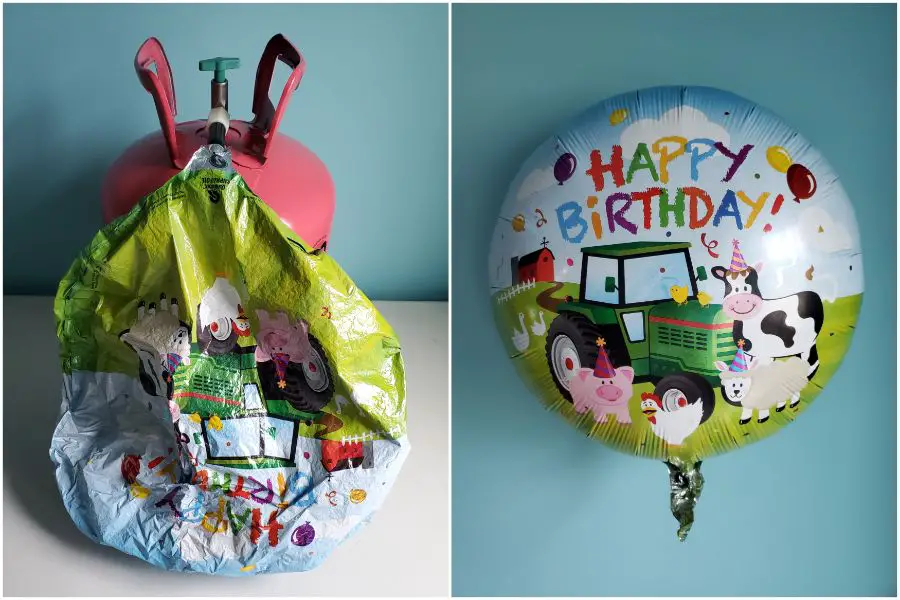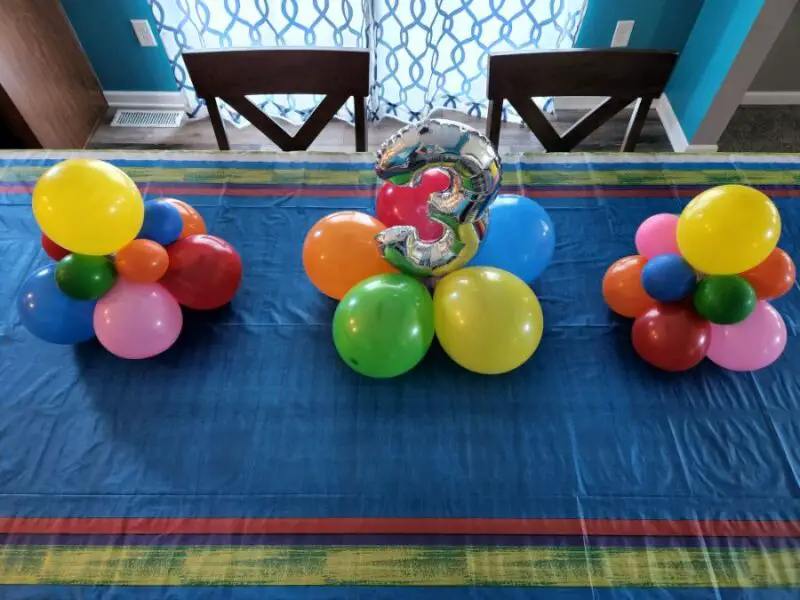The party is over and you have all these balloons floating around your house or venue. What do you do with them?
Or maybe that special balloon you were gifted has done the inevitable and is starting to droop. But, you’d like it to hang on a bit longer?
You might be wondering – can helium balloons be reused and refilled?
The answer is yes!
Under the right circumstances, helium balloons can be refilled. Read on to find out how it works and why you might want to consider doing it.
Why Refill Helium Balloons?
Why even go through the trouble of refilling helium balloons? There’s a few different reasons why.
- To Save Money.
- To Save Time.
- Convenience.
- To Be Environmentally Conscious: Recycle and Reuse.
- To Keep a Special Balloon Floating.
I love to throw birthday parties. I also love having balloons at birthday parties!
I have multiple bins full of reusable party supplies that I can use for setting up my parties. So, why should balloons be any different?
It’s a shame to use a balloon once and throw it away. Why not be resourceful and reuse?
On another note, as a mom, I know what it’s like when kids get attached to things.
One year my three year old was so attached to his special birthday balloon that he was devastated when it started to fall. Luckily, it could be refilled, and we were saved from a meltdown!
While reusing and refilling can be wonderful, not every balloon is created equal. Let’s get into how it all works!
Can Foil Balloons Be Refilled?
Foil balloons are the best kind of balloon to refill. This is because of the materials they are made of and how they are constructed.
Latex balloons start small and grow larger as they are filled. Significant force has to be applied to get the latex to expand, which slowly weakens the material over time.
Foil balloons do expand when filled with a gas, but they are not stretchy. They are made of a strong, plastic material that is cut to size.
When you take a foil balloon out of it’s packaging and lay it out, that is the size it will be after inflation.
During the manufacturing process, two pieces of the plastic material are essentially welded together around the edges to create a seam.
A valve is stamped in at the bottom with a plastic tube, which is where you insert the helium nozzle to fill the balloon. It is designed to be self sealing, so there is no need to tie a knot.
If you’d like to learn more about foil balloons, check out how foil balloons are made for more in depth information on the materials and manufacturing process.
All of this is significant, because it affects whether or not you can refill the foil balloon.
How to Refill
There are two requirements for successfully refilling foil balloons:
- The balloon must be in good condition.
- No holes in the balloon.
- No leaks around the seam.
- The valve must still be in tact for sealing.
- The balloon should be completely emptied of any pre-existing gas (unless you’re simply “topping it off” with helium, which I will explain later on).
Make Sure the Balloon is in Good Condition
I don’t know what it is about “dying” balloons, but my kids just love to beat them up. They can’t resist giving the balloon a good punch, kicking it around like a soccer ball, or putting it on the ground and jumping on it.
So, while foil balloons are made to be stronger than latex balloons, it is possible for them to tear or leak at the seam.
Below is a foil balloon about six months after it was purchased. The helium had run out long before this.
My youngest son loves tractors, and I thought it would be a nice surprise for him to be able to enjoy his balloon again. So, I refilled it.
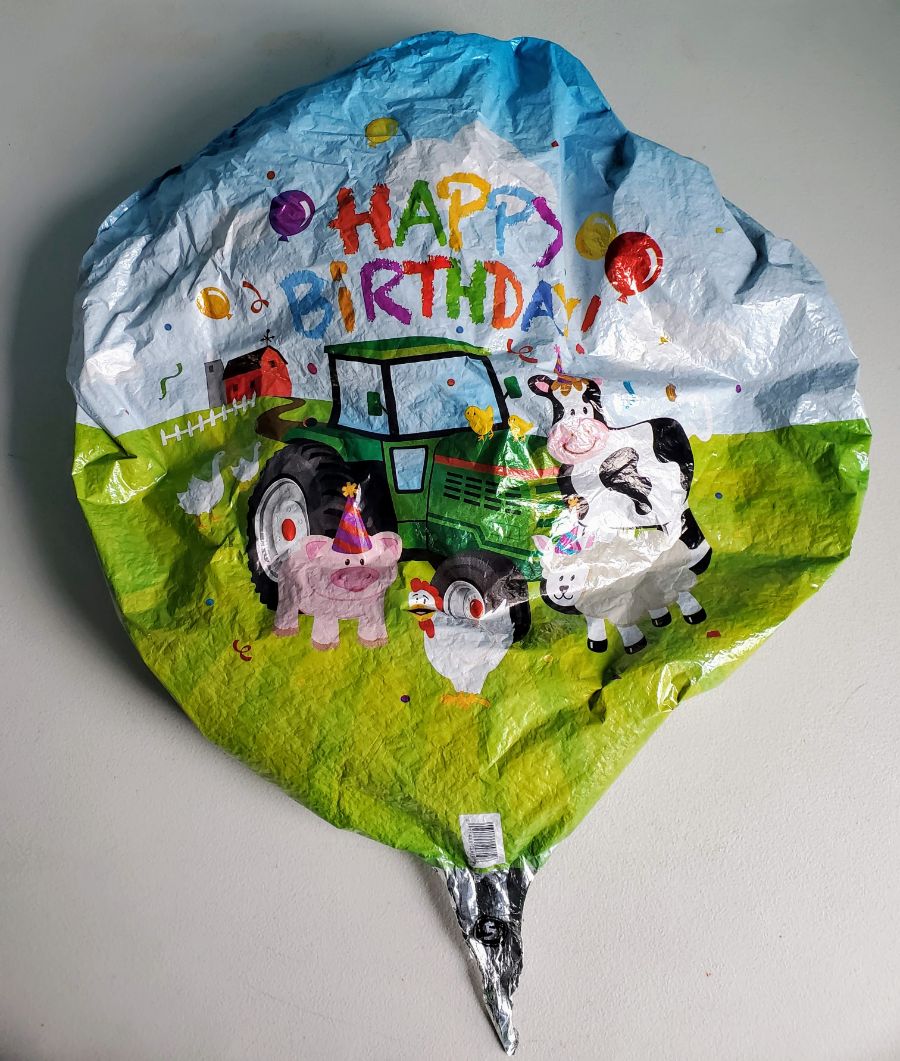

Unfortunately, this balloon’s tensile strength was tested one too many times by my children.
As soon as I filled it, I could hear the hissing of the helium as it quickly escaped from small leaks around the seam. You can see how it quickly started to deflate.
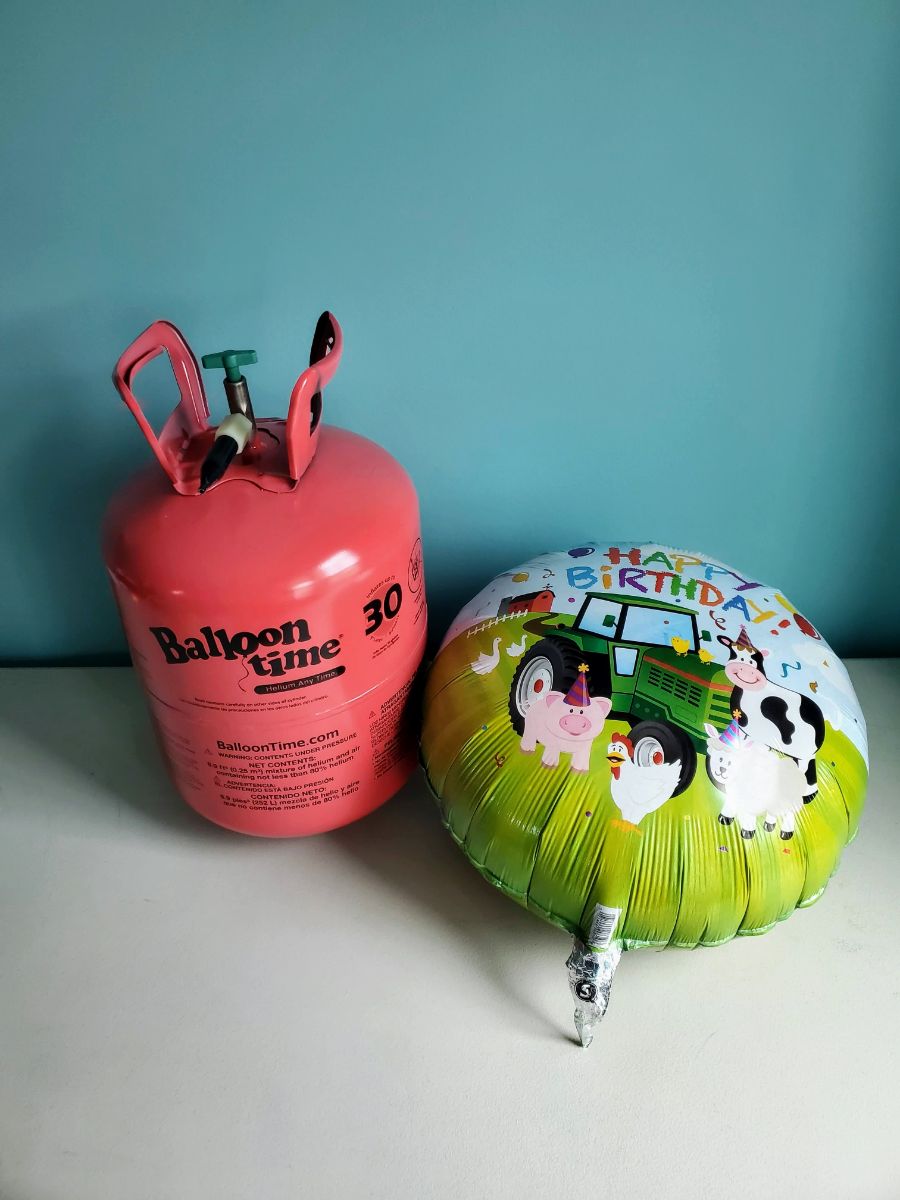
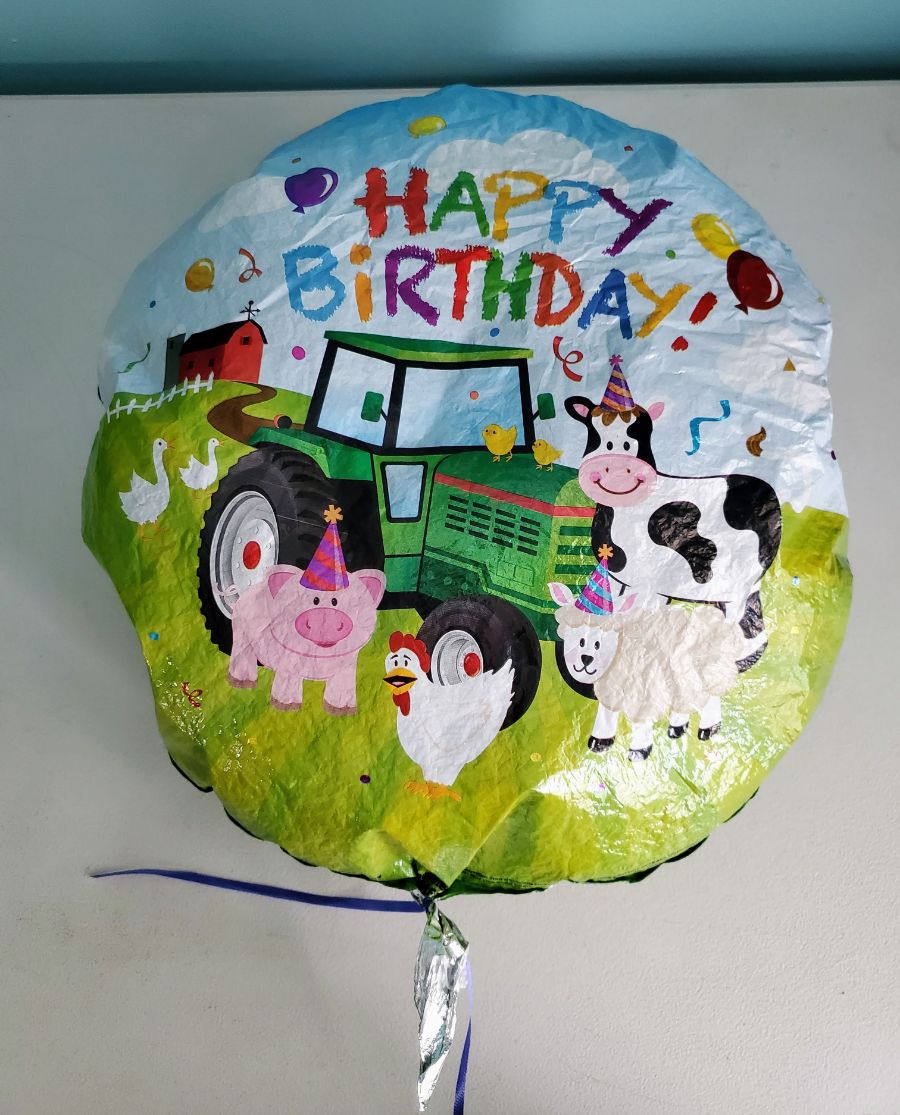
This balloon was not suitable for refilling because it was not in good condition. And, regrettably my helium was wasted.
Another problem with this particular foil balloon was that it was not completely empty. It had some air in it, which also inhibited its ability to float.
This leads to the second requirement in refilling foil balloons.
Make Sure the Balloon is Empty
Helium molecules are very small; helium is a very light gas. It is lighter than air, which is why it is used to make balloons float.
It is important that the balloon is completely empty of any gases that might be inside the balloon so that the helium can lift the balloon.
Take this Paw Patrol balloon for example. You can see that it is not fully deflated; it is not completely empty and flat.

What happened when I put helium in it? The balloon refilled nicely, but it did not float.
There was not enough helium on the inside of the balloon to make it float.
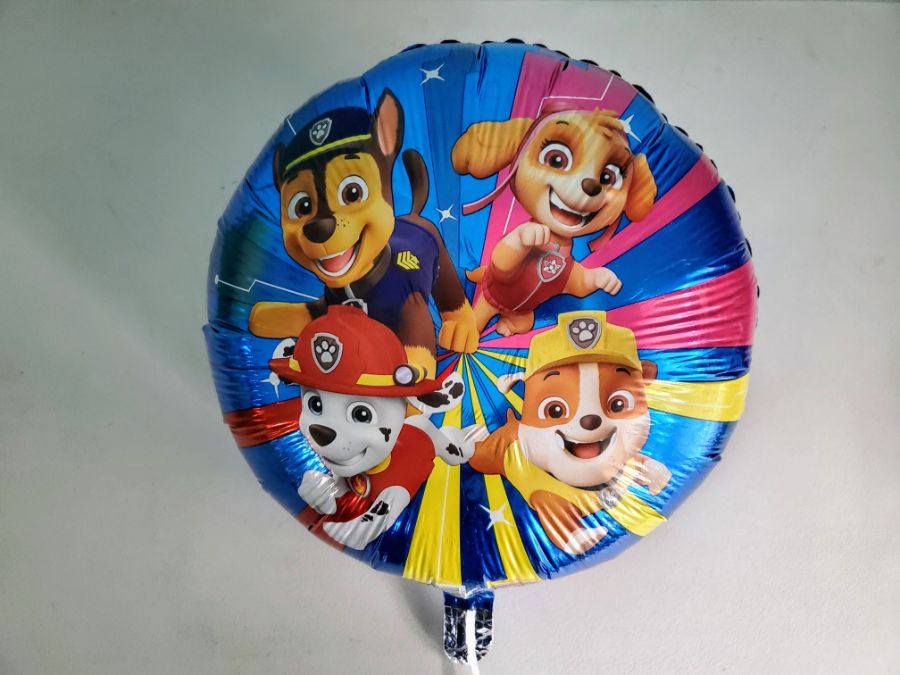
The balloon must be completely emptied in order for the balloon to float again after being refilled with helium. See below.


Emptying balloons also allows you to easily fold up balloons you want to store and reuse at a different time.
How to Empty a Foil Balloon
Emptying out a foil balloon is simple. You just need a straw!
I usually have a straw on hand that I use to fill up foil balloons with air. But, a normal drinking straw will work just as well.

Insert the straw into the valve. Make sure to insert it far enough up into the balloon so that it goes past the inner plastic tube (this is what’s preventing the gas from escaping).
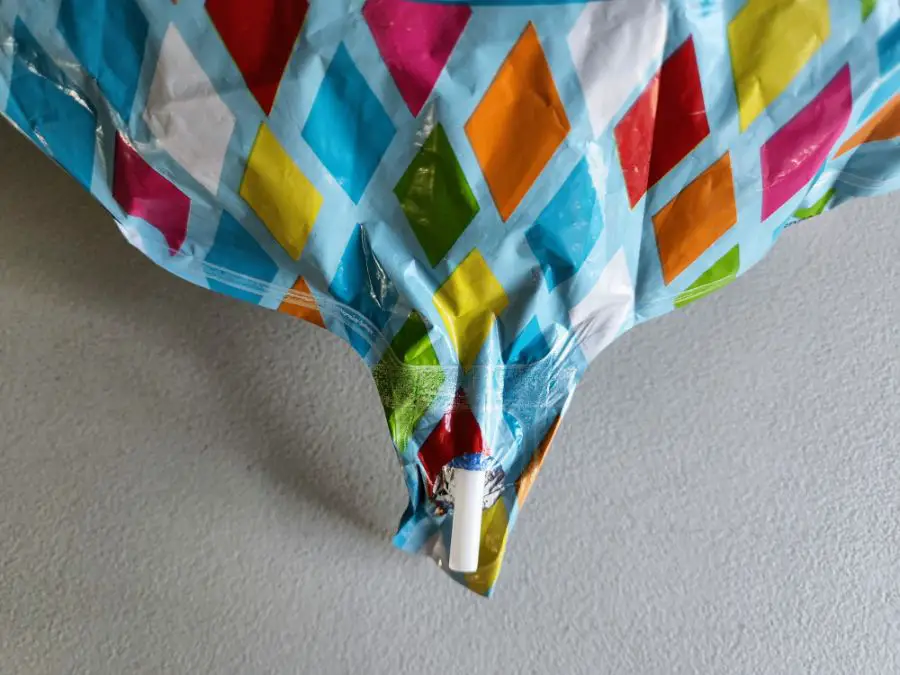
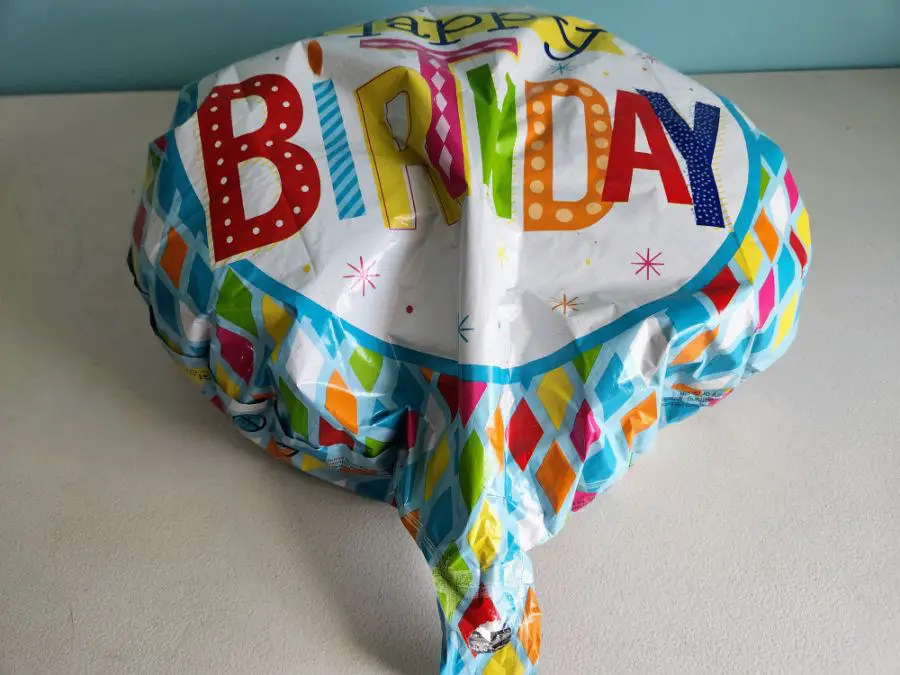
Once the straw is inserted all the way, squeeze out whatever gas is left inside. If nothing comes out, move the straw farther up.

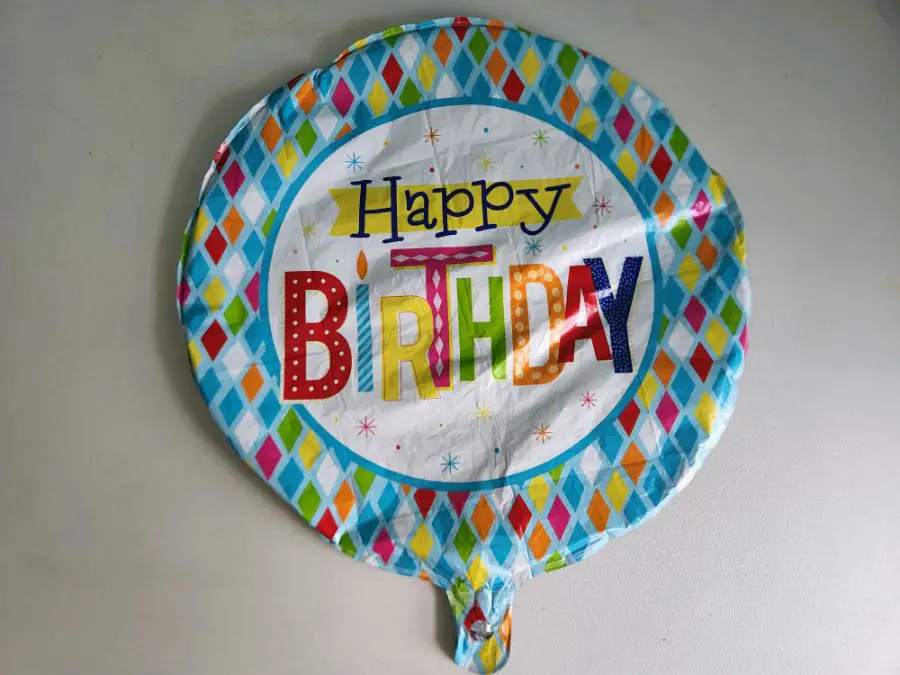
Fold it up and store it. When you’re ready to reuse the balloon, just refill!
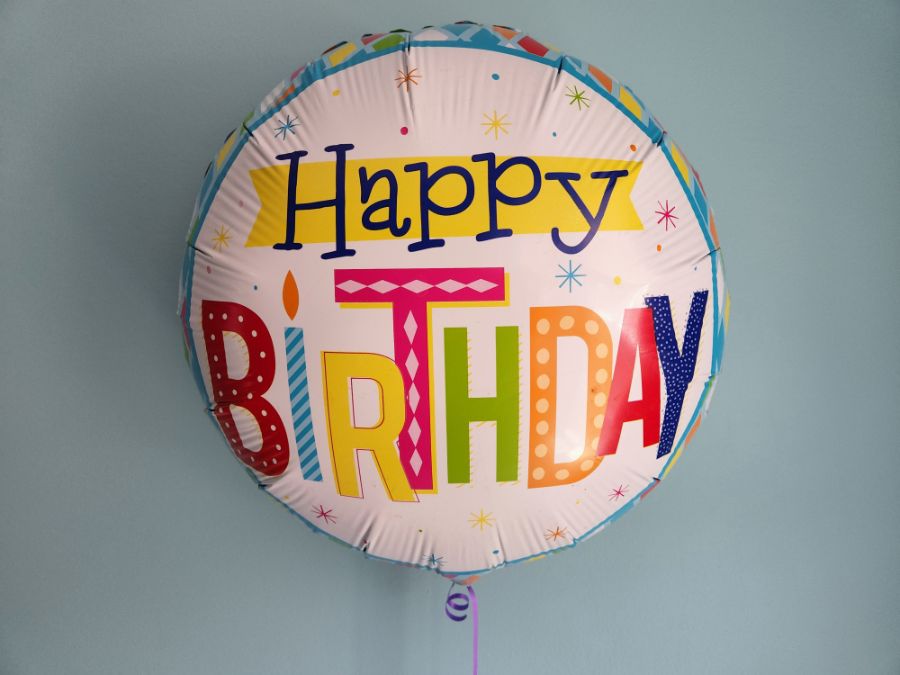
Topping Off a Helium Balloon
Another way to refill a foil balloon is to simply top it off.
If your balloon has lost its full, balloon-like appearance, but is still mostly full of helium and floating – pop it on the helium tank and fill it back up!
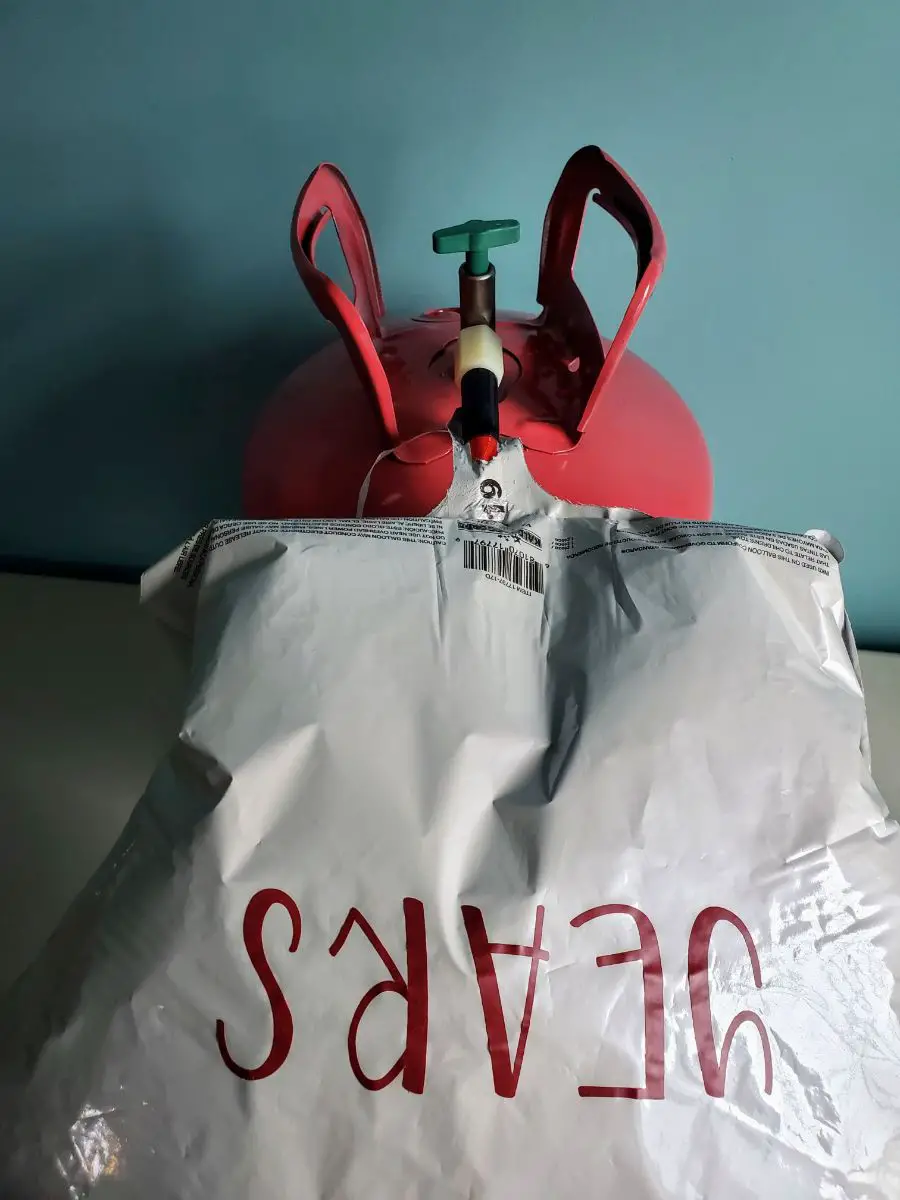

This white foil balloon was still floating after a couple of weeks, but it had lost its balloon energy.
It still had a lot of helium in it, so I topped it off with some more helium and it continued to float for weeks!
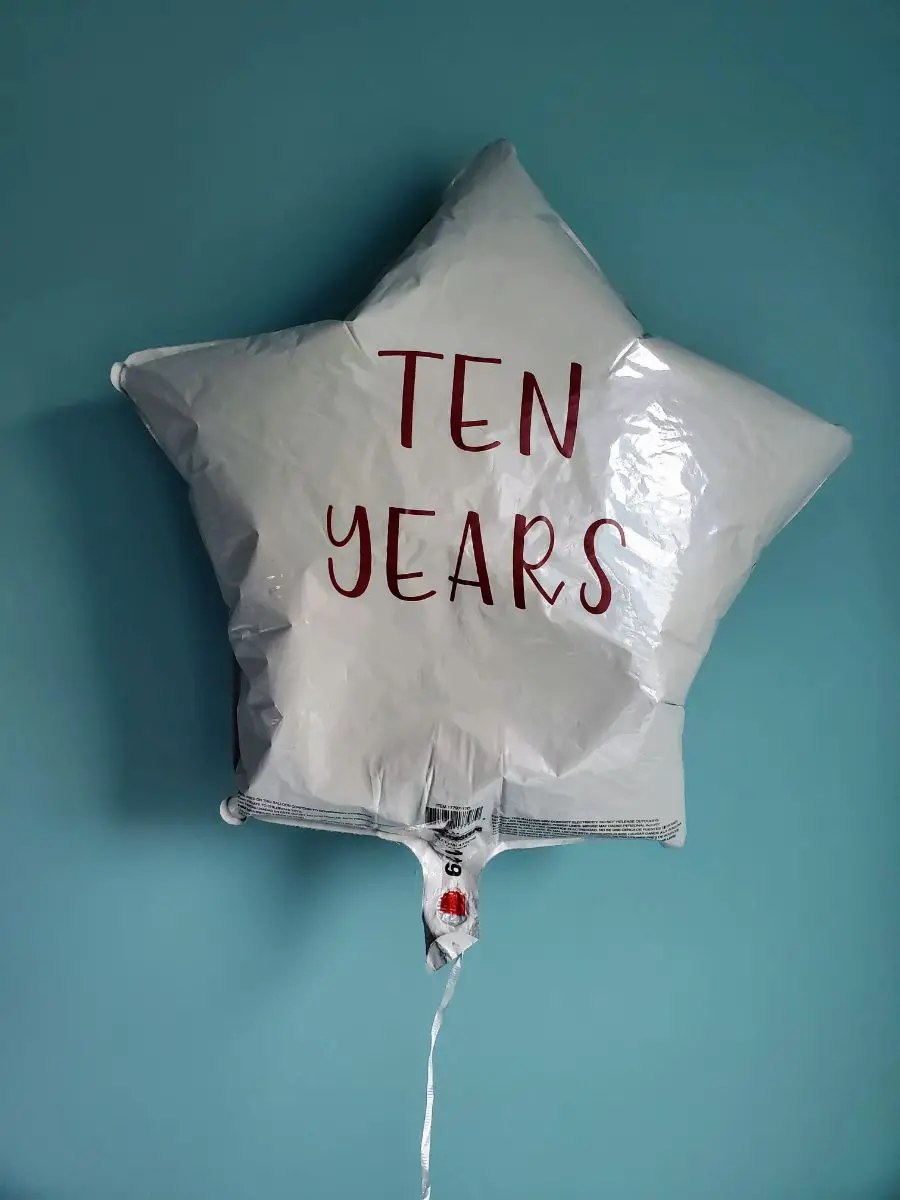

This purple foil balloon pictured below had moved from a floating state to a hovering state. You can see how it was floating above the table.
It was slowly starting its descent to the ground.
It had already been floating around the house for several weeks, but after a helium top-off, it continued to float for several more.

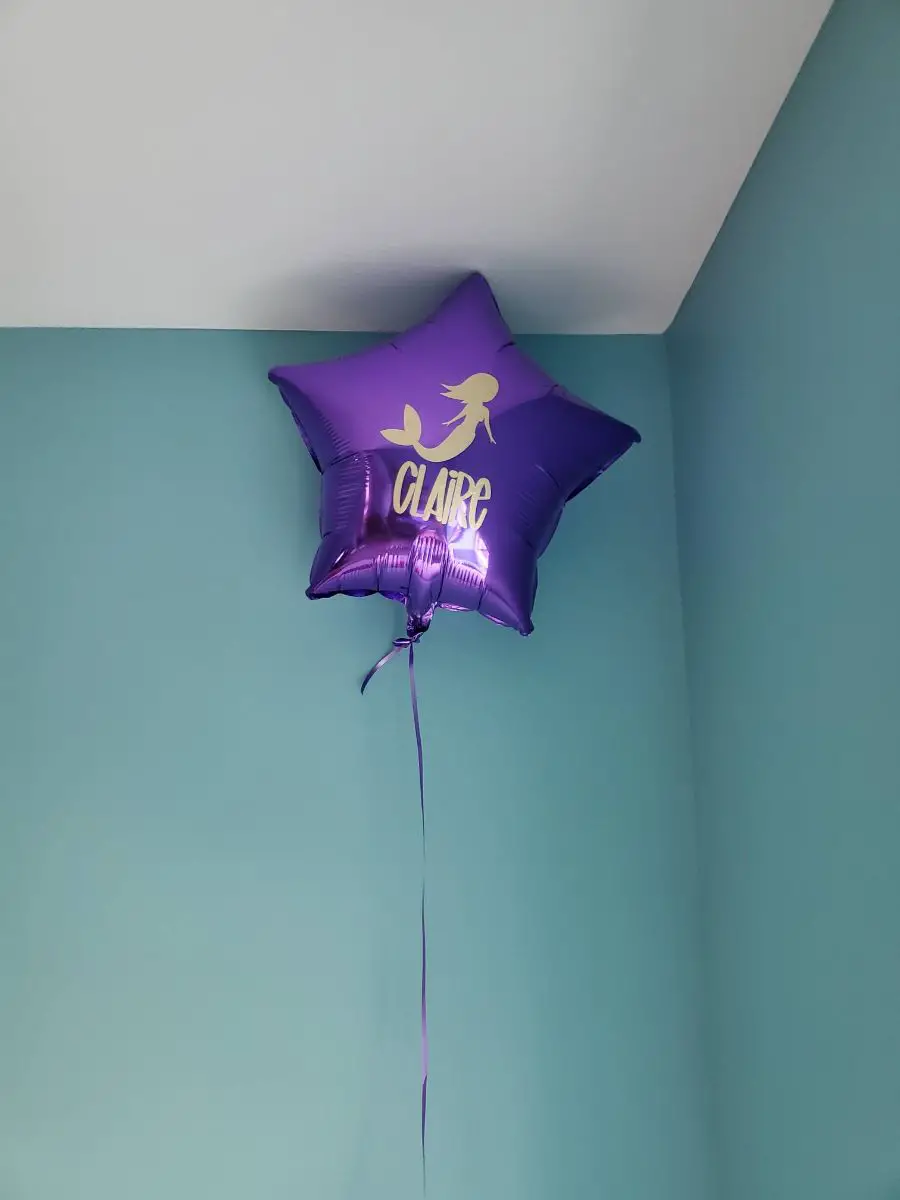
Now that we’ve covered foil balloons, what about latex?
Can Latex Balloons Be Refilled?
Refilling latex balloons is not impossible. However, it isn’t the ideal balloon of choice to fill again, especially with helium.
The reason I say this is because when a latex balloon is filled, the material is stretched out, as stated before. By doing this, the structural integrity of the balloon weakens.
The more it’s stretched, the more it weakens, and the likelihood of it popping significantly increases. If you refill it with helium then you very well may just be wasting it.
It may not be a risk you want to take, considering helium is a valuable resource. But it is doable – so how do you do it?
How to Refill
Let’s not forget that in order to seal a latex balloon it has to be tied into a knot. This means you would have to untie the knot in order to refill the balloon.
Untying a balloon knot is rather tedious and a bit difficult.
The latex material is thick and stretchy, which makes it difficult to simply untie and pull apart. The knot is tight and unforgiving.
I have found that the easiest way to get a balloon knot undone is to wedge an object like a pencil into the middle of the knot. This gives you some time and space to move the material around without it snapping back into place.
Then, simply slip the end of the balloon back under the loop.
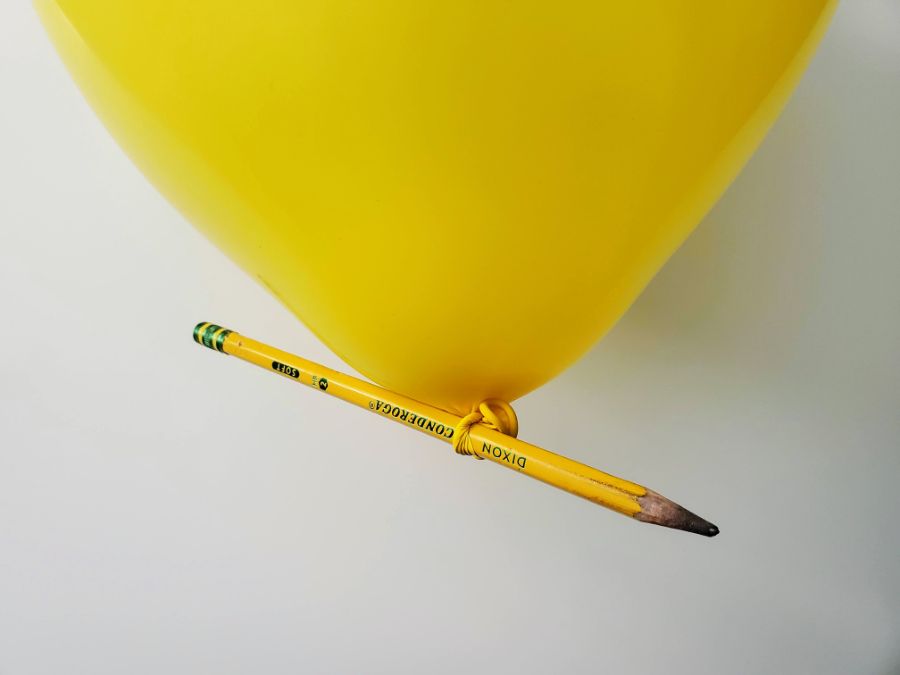
Once the knot is undone, any gas left in the balloon will release and you have a deflated latex balloon ready to be inflated again.
Is It Worth It?
No, I don’t necessarily recommend refilling latex balloons.
Latex balloons are the cheapest balloon you can buy. They cost less than ten cents a piece.
There’s always a risk that a latex balloon could pop, but the risk increases with each use. So, if they’re so cheap to purchase, why take the risk of wasting the helium?
However, when it comes to latex balloons, there is another option.
How to Make Latex Balloons Last Longer
You might not always be able to reuse latex balloons, but you can extend their float time. And, you can do this by using Hi Float.
Hi Float is a solution that is pumped into a latex balloon before inflating. It coats the inside and holds the helium in.
If you’re looking to enjoy your latex balloons for more than a day and get your money’s worth, try using Hi Float.
Check out What is Hi Float For Balloons to learn more about Hi Float and how it can be used to make your balloons float for longer.
It is a more effective option than refilling latex balloons!
Refill With Air
Don’t forget about air! Helium balloons were made to be used with helium, but that doesn’t mean that they can’t be filled with air.
If you want to give balloons some new life, but you don’t want to pay for more helium, then refill it with air! Balloons can still be fun with air inside.
Kids can play with them. Or, they can still be used as decoration!
Use them in a centerpiece or stick them on the wall! Check out How to Hang Balloons on the Wall for some great ideas!
Disposing of Used Balloons
There will eventually come a point that a balloon can not be reused or refilled. Maybe it’s damaged or you just don’t need it anymore.
No matter the circumstance, you should always dispose of balloons properly.
All balloons are labeled with choking hazard warnings. Deflated and balloon pieces are dangerous to children or pets who might ingest them.
Helium balloons usually have strings attached to them. These can be a choking hazard, as well.
It’s incredibly important to take care of balloons responsibly.
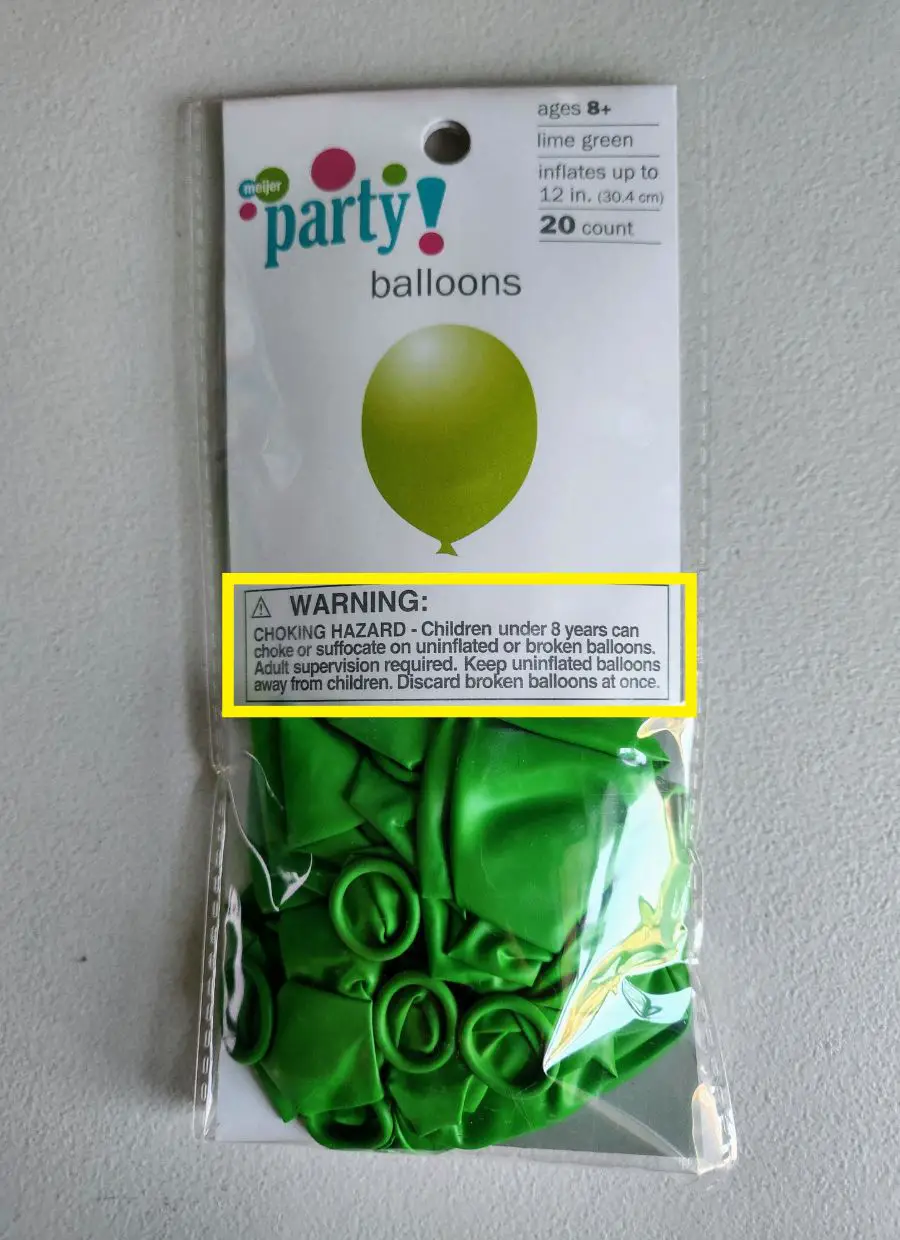
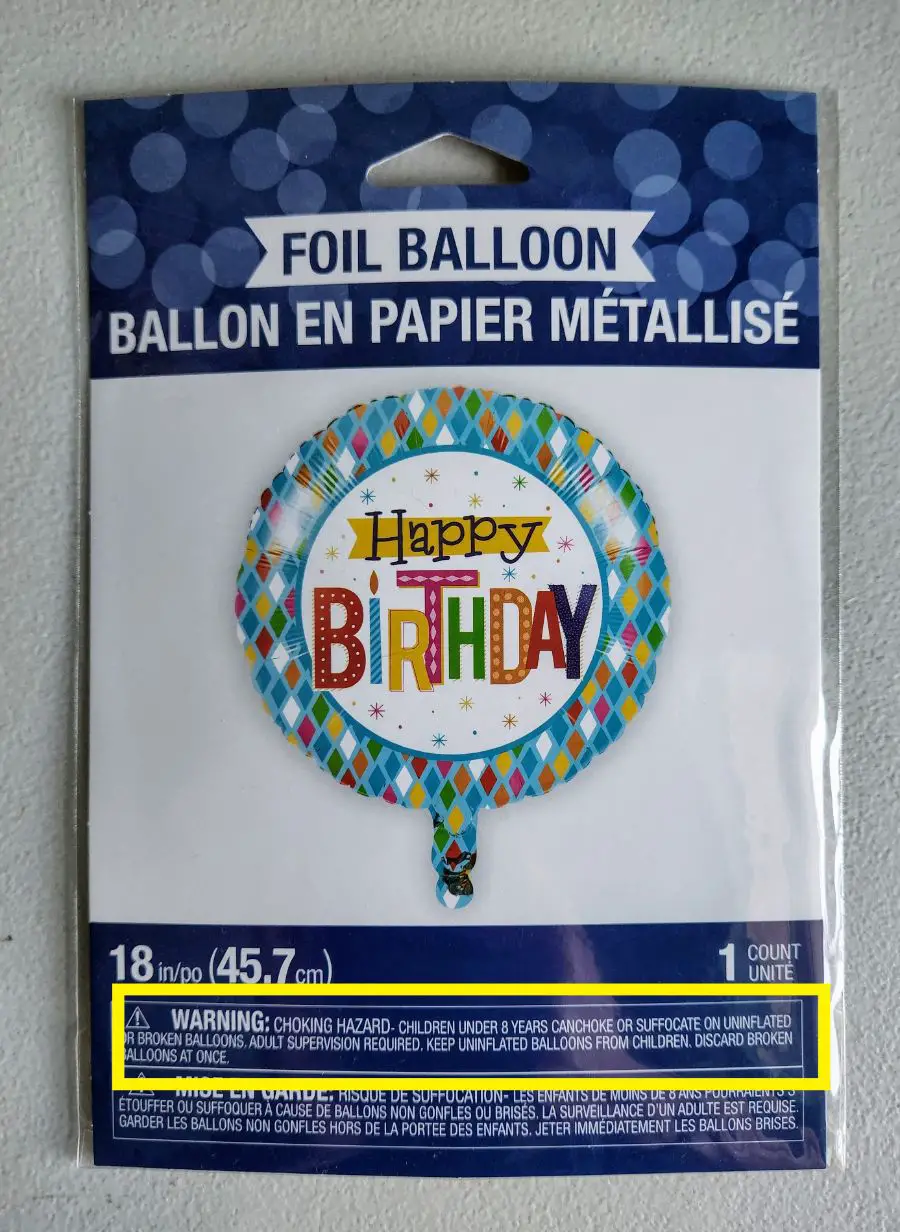
Furthermore, balloons should not be treated as if they are biodegradable. Not disposing of them properly is harmful to the environment.
All balloons should be thrown away so that they do not cause harm to our wildlife (land or sea) and/or add to the trash pollution.
Additionally, foil balloons can conduct electricity because they have a metal component. They are called foil balloons after all.
They should not be exposed to any kind of power source that could cause power outages or fires. This is a safety hazard for everybody.
Note that all foil balloons are printed with these warnings. See below.
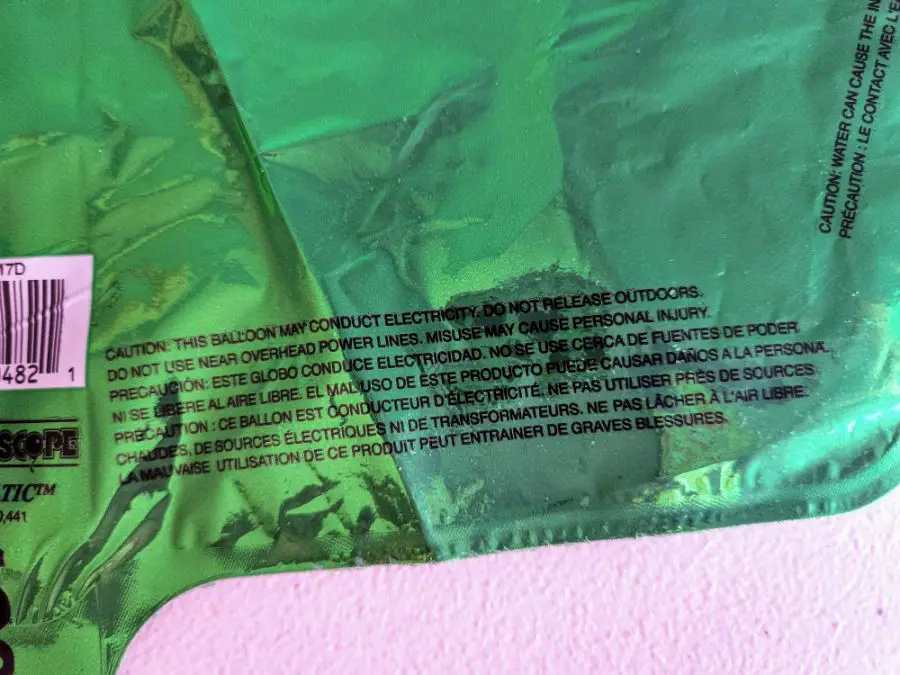
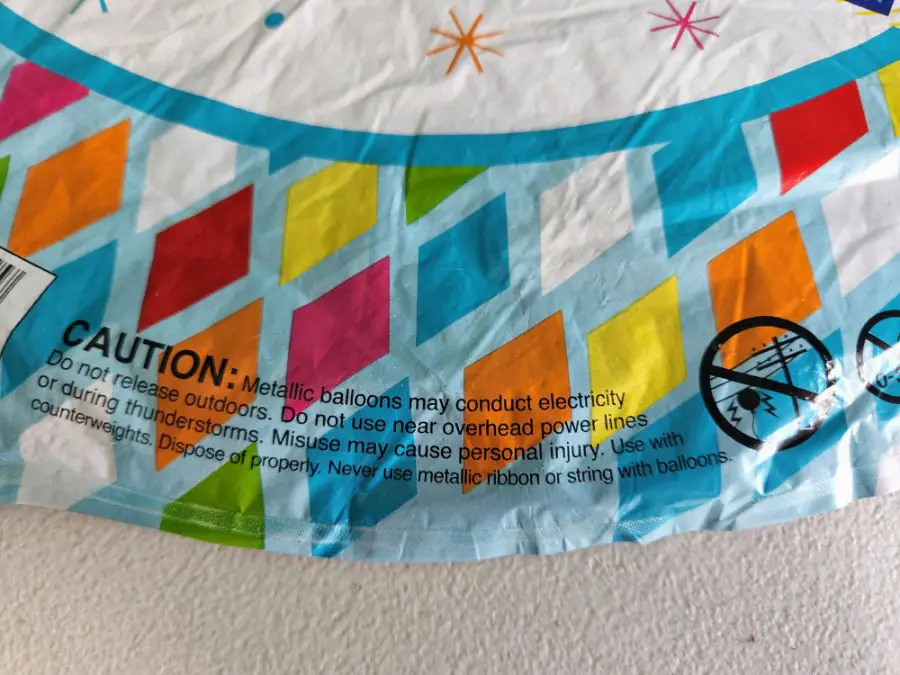
Balloons are fun, let’s keep it that way!
Final Thoughts
It’s always a good practice to recycle and reuse. And balloons can be part of that too!
So if you’re looking to use your balloons again or simply want to keep a beloved balloon alive, refilling is a great option!
Enjoy your balloons over and over again!

